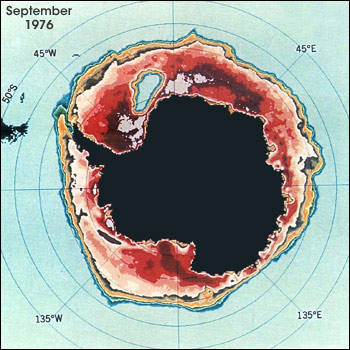Data-based estimates show that the global oceanic carbon flux has increased rapidly since around 2000 with little decadal variability during 1992-1999 (Rödenbeck et al., 2015). An article published in Geophysical Research Letters (Li and Ilyina, 2017) used large ensemble climate model simulations to show that the observed increase is much faster than simulated by their biogeochemical process model. By... Continue Reading →
Antarctic volcanic eruption linked to the onset of the most rapid global climate change during the end of the last ice age
Cold and dry glacial-state climate conditions persisted in the Southern Hemisphere until approximately 17.7 ka, when paleoclimate records show a largely unexplained sharp, nearly synchronous acceleration in deglaciation. Detailed measurements in Antarctic ice cores document exactly at that time a unique, ∼192-y series of massive halogen-rich volcanic eruptions geochemically attributed to Mount Takahe in West... Continue Reading →
Recent wind-driven change in subantarctic mode water and its impact on ocean heat storage
The subduction and export of Subantarctic Mode Water (SAMW) supplies the upper limb of the overturning circulation and makes an important contribution to global heat, freshwater, carbon and nutrient budgets. Upper ocean heat content has increased since 2006, helping to explain the so-called global warming hiatus between 1998 and 2014, with much of the ocean... Continue Reading →
Algae drive enhanced darkening of bare ice on the Greenland ice sheet
Melting of the Greenland ice sheet is enhanced by surface darkening caused by various impurities. We quantified the contribution of dark pigment-producing algae to the ice sheet surface darkening, based on field measurements in the southwestern part of the ice sheet during the 2014 melt season. Our analysis reveals that the impact of algae on... Continue Reading →
Concerns for ozone recovery
This new paper published in Science suggests that as the tropical oceans get warmer, ocean emissions of methyl bromide (CH3Br) and other short-lived ozone-depleting substances will increase, slowing down the ongoing ozone recovery. Image credit: Scientific assessment of ozone depletion 2014 http://science.sciencemag.org/content/358/6368/1257 https://www.esrl.noaa.gov/research/themes/o3/ http://science.sciencemag.org/content/353/6296/269
Arctic report card: update for 2017
NOAA's Arctic program released Arctic Report Card Update for 2017. The report finds "Arctic shows no sign of returning to reliably frozen region of recent past decades", "The sea ice cover continues to be relatively young and thin with older, thicker ice comprising only 21% of the ice cover in 2017 compared to 45% in 1985.", and... Continue Reading →
Explaining extreme events from a climate perspective
This special report of the Bulletin of the American Meteorological Society (BAMS) presents some extreme events in 2016, such as the record global heat, the heat across Asia, the 2015-16 El Niño and a marine heat wave off the coast of Alaska, and discusses how human-caused climate change may have affected the strength and likelihood of these extreme events.... Continue Reading →
Active Pacific meridional overturning circulation (PMOC) during the warm Pliocene
An essential element of modern ocean circulation and climate is the Atlantic meridional overturning circulation (AMOC), which includes deep-water formation in the subarctic North Atlantic. However, a comparable overturning circulation is absent in the Pacific, the world’s largest ocean, where relatively fresh surface waters inhibit North Pacific deep convection. We present complementary measurement and modeling... Continue Reading →
Interannual variability of western North Pacific SST anomalies and its impact on North Pacific and North America
In this study, the interannual variability of sea surface temperature (SST) and its atmospheric teleconnection over the western North Pacific (WNP) toward the North Pacific/North America during boreal winter are investigated. First, we defined the WNP mode as the first empirical orthogonal function (EOF) mode of SST anomalies over the WNP region (100–165°E, 0–35°N), of... Continue Reading →
Global atmospheric teleconnections and multidecadal climate oscillations driven by Southern Ocean convection
A 1000-yr control simulation in a low-resolution coupled atmosphere–ocean model from the Geophysical Fluid Dynamics Laboratory (GFDL) family of climate models shows a natural, highly regular multidecadal oscillation between periods of Southern Ocean (SO) open-ocean convection and nonconvective periods. It is shown here that convective periods are associated with warming of the SO sea surface... Continue Reading →








